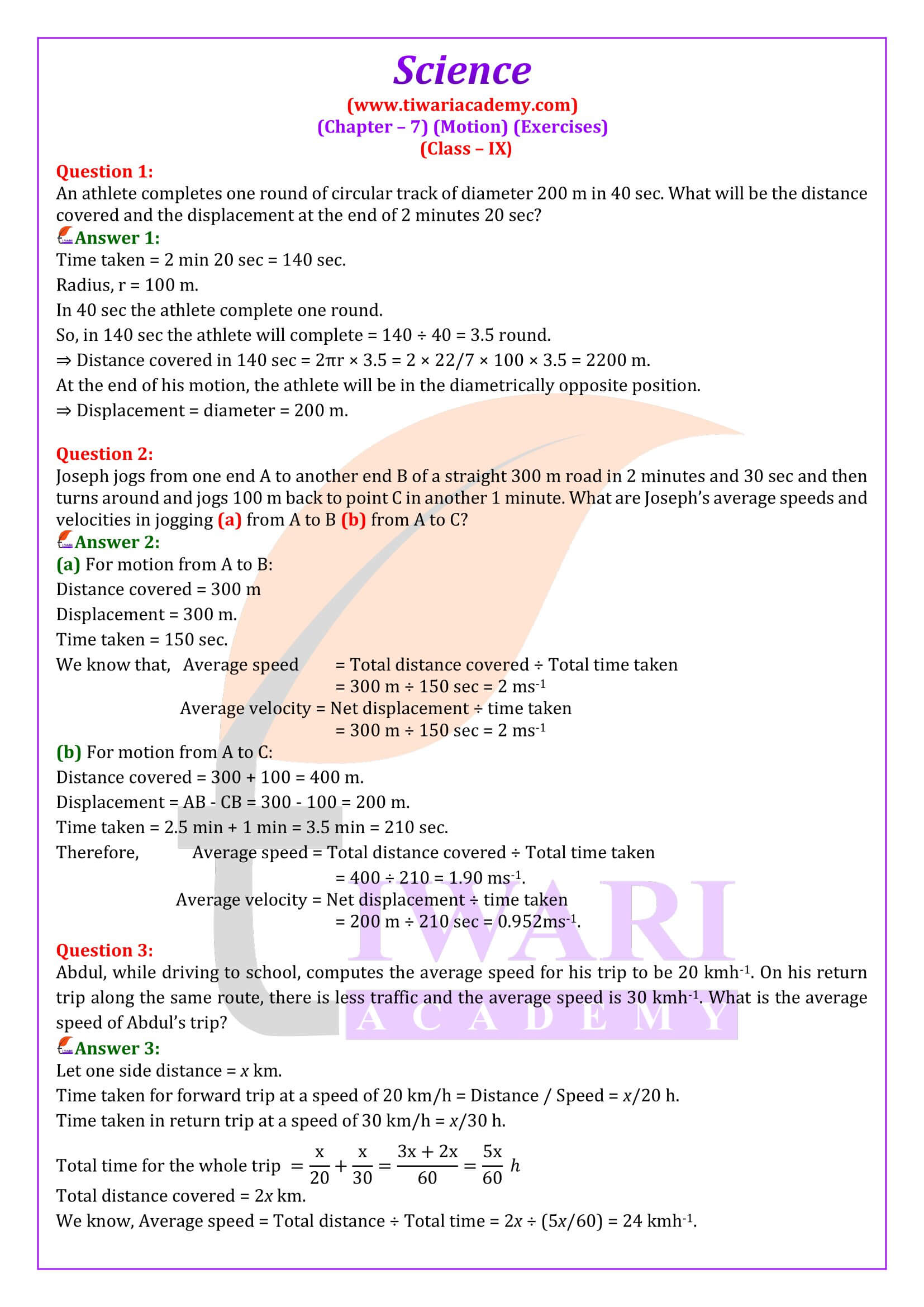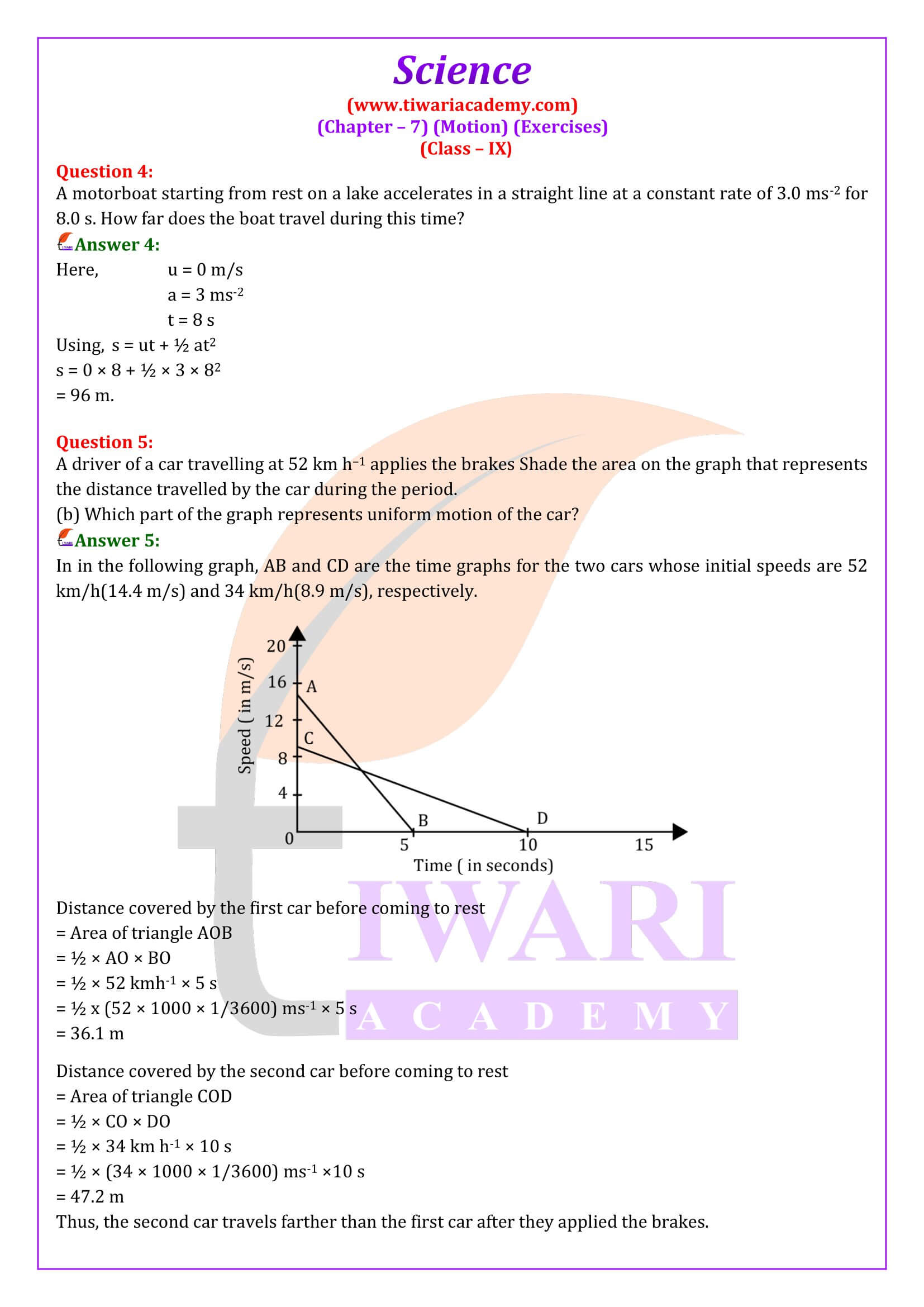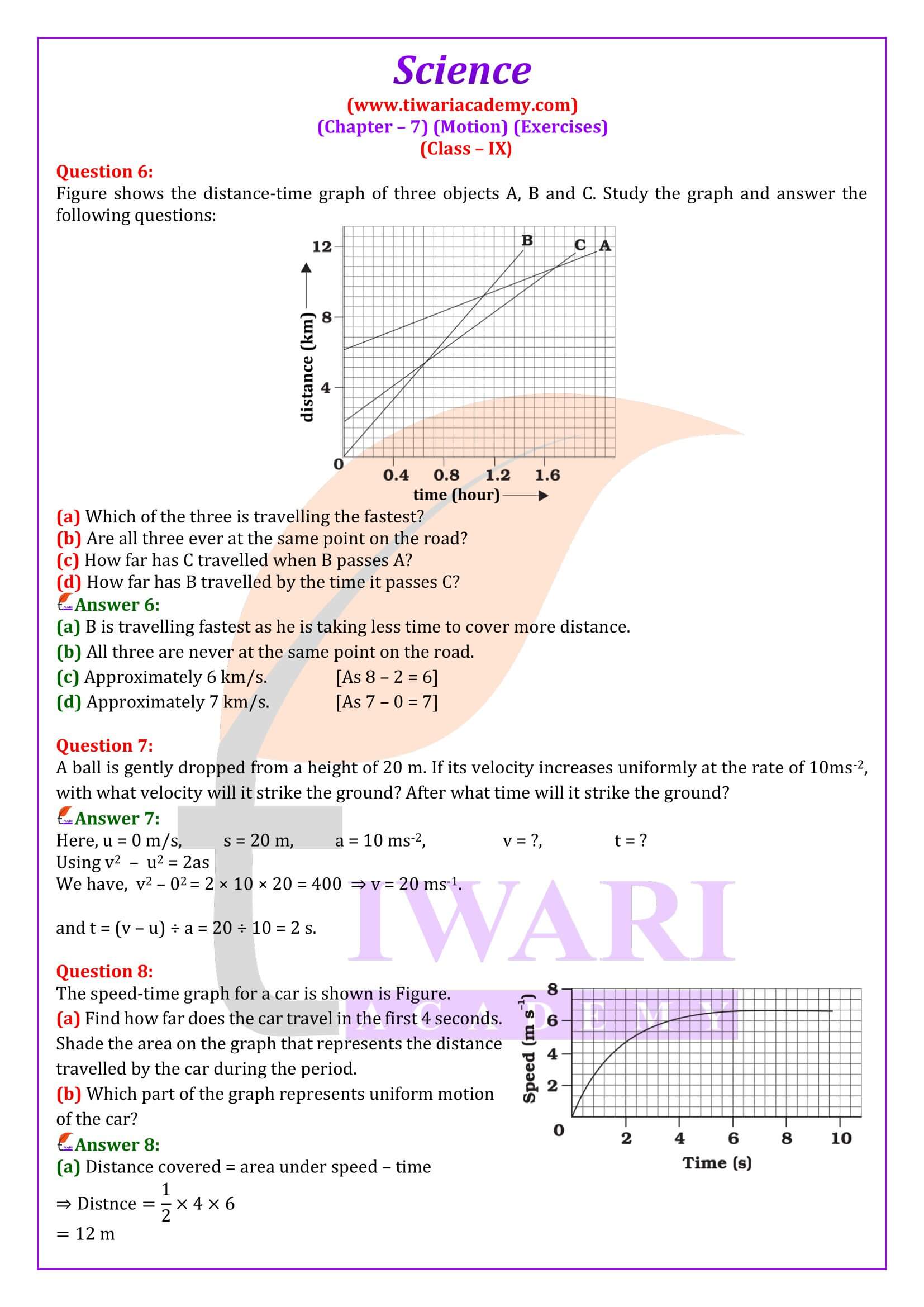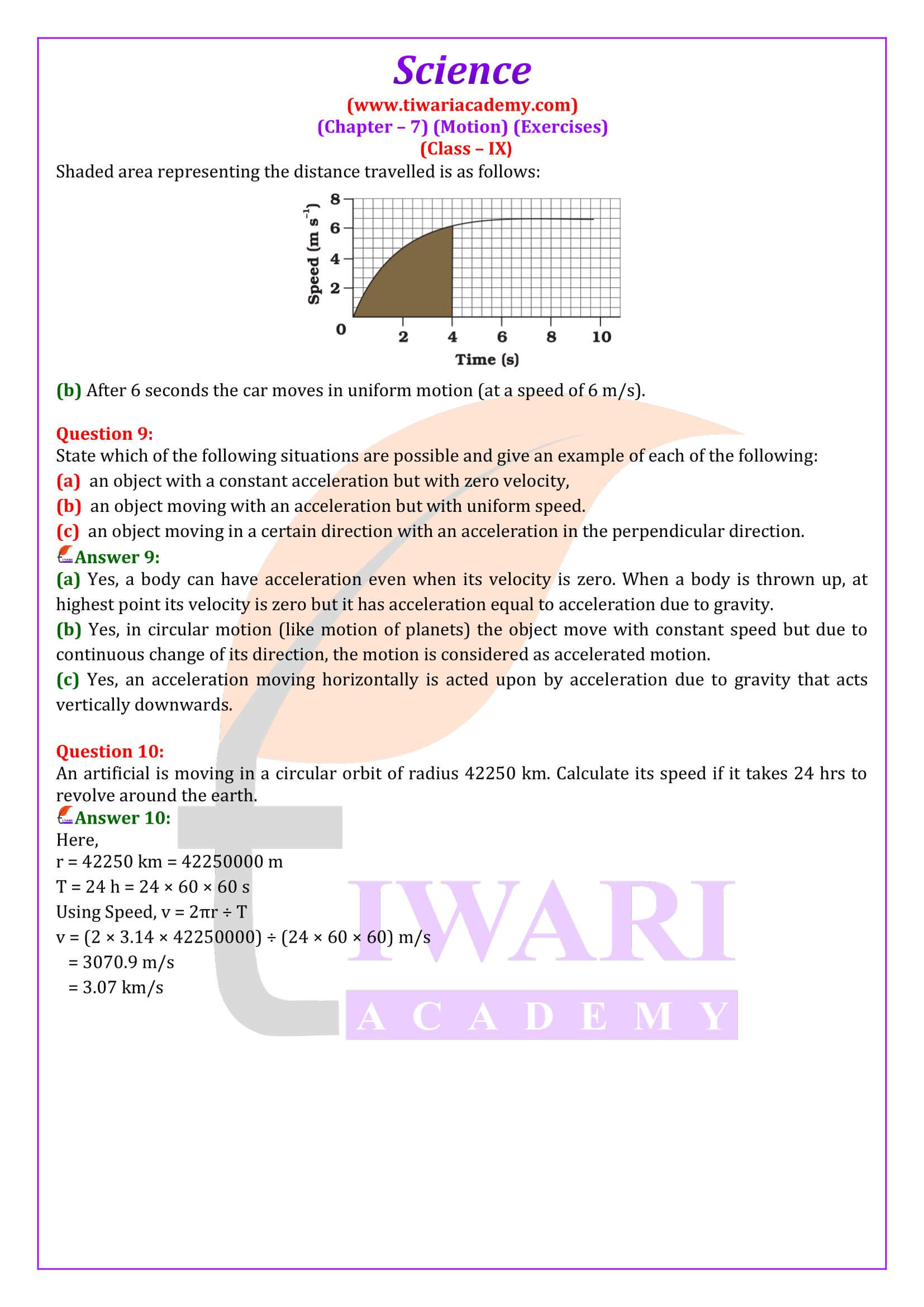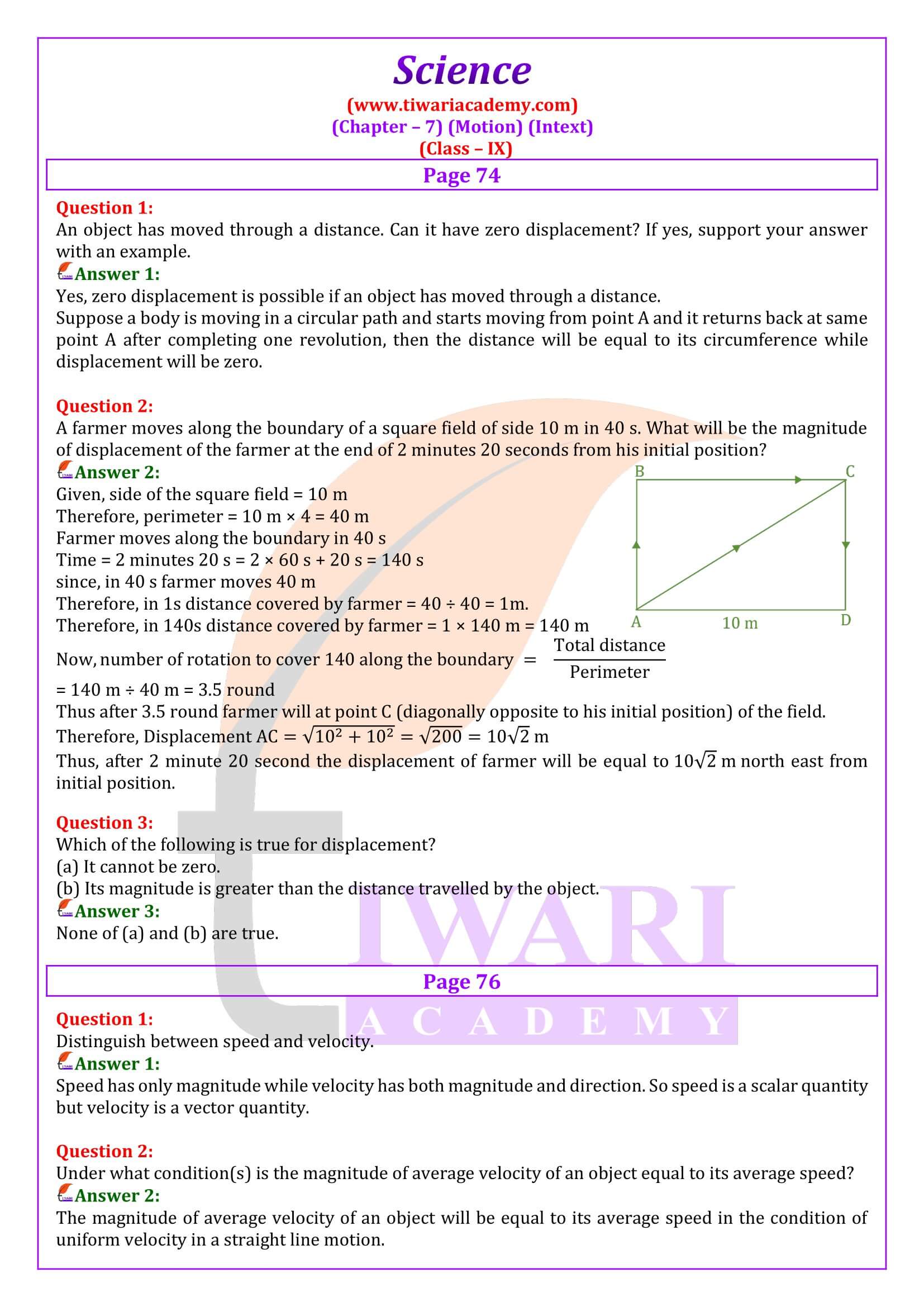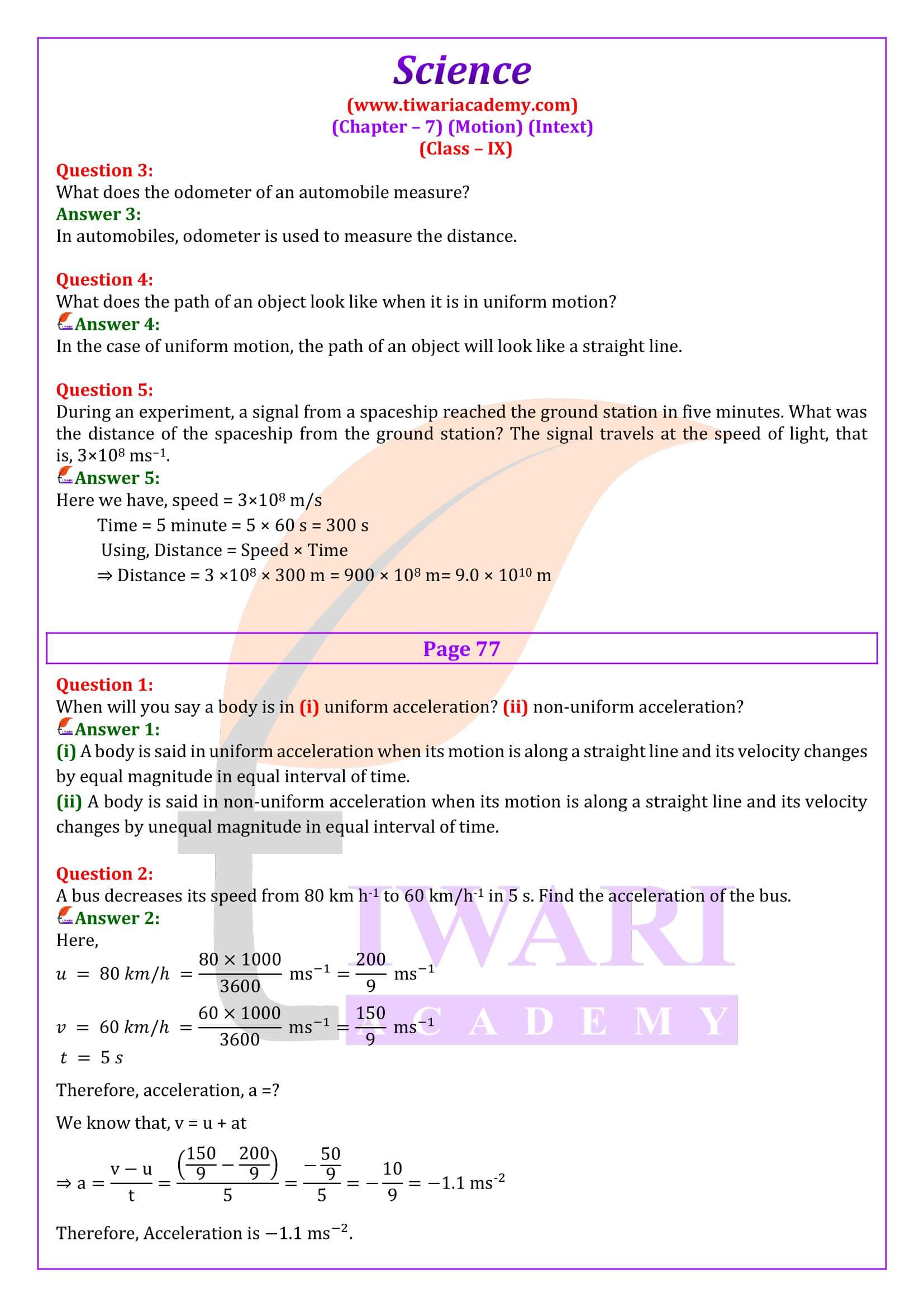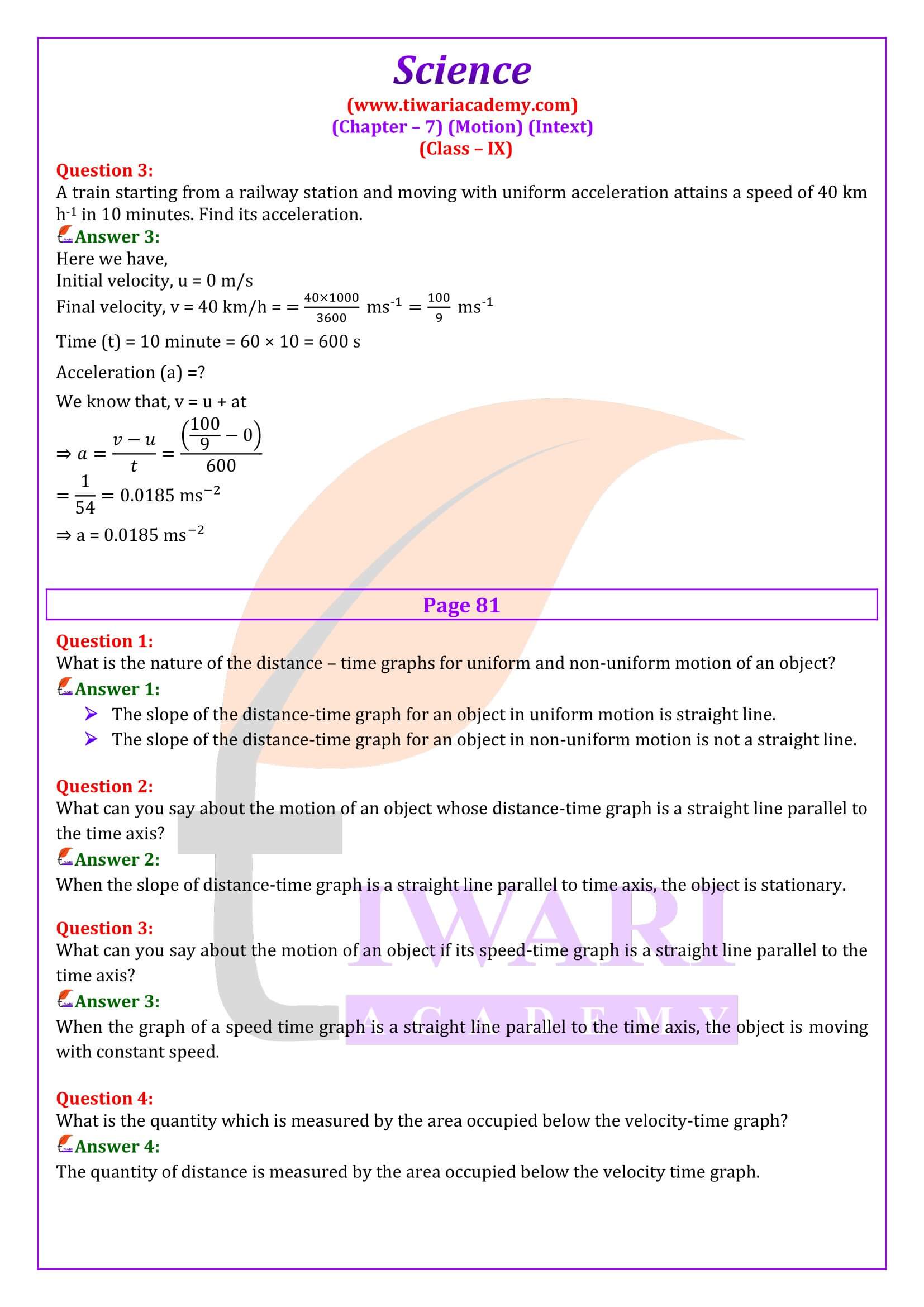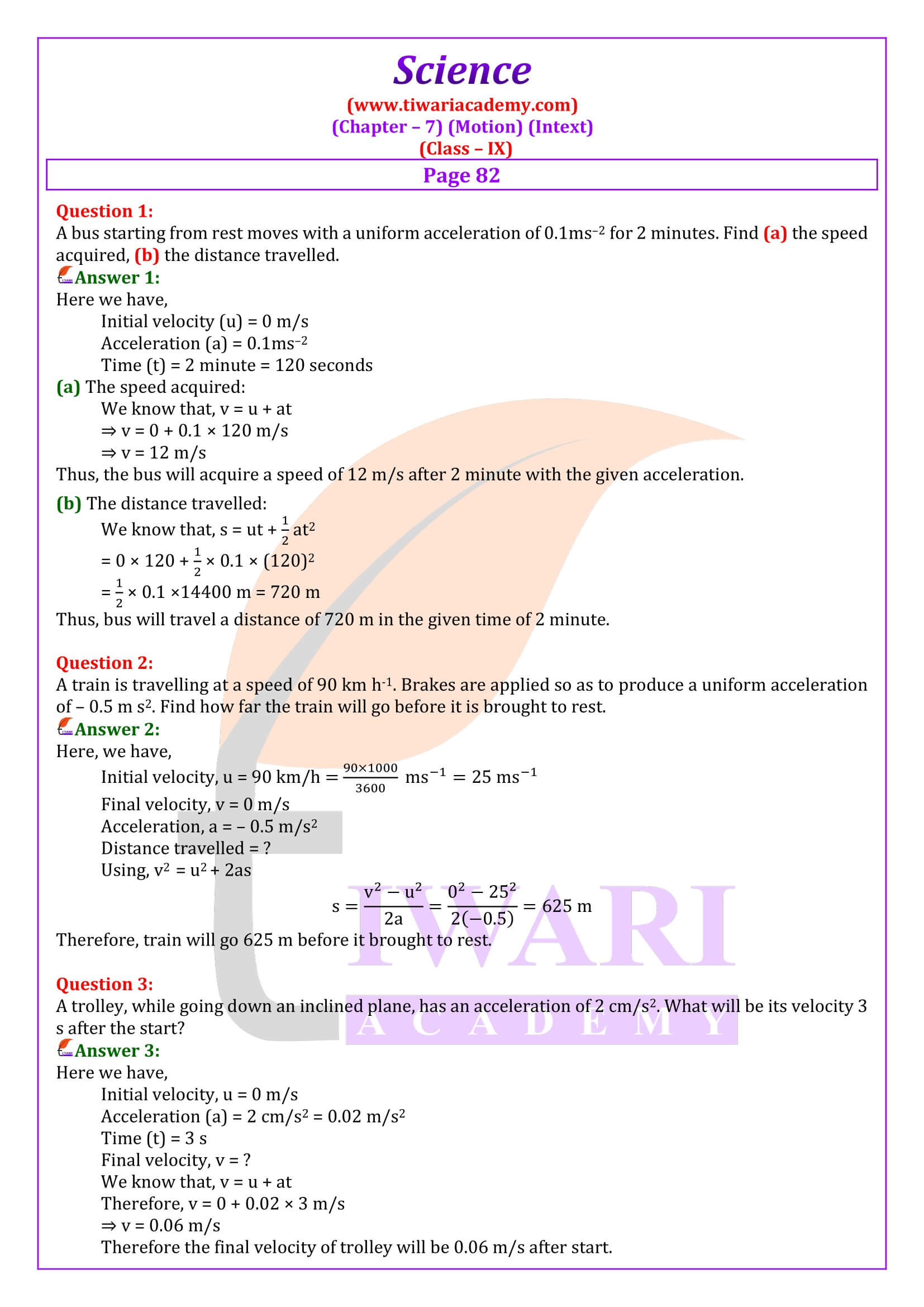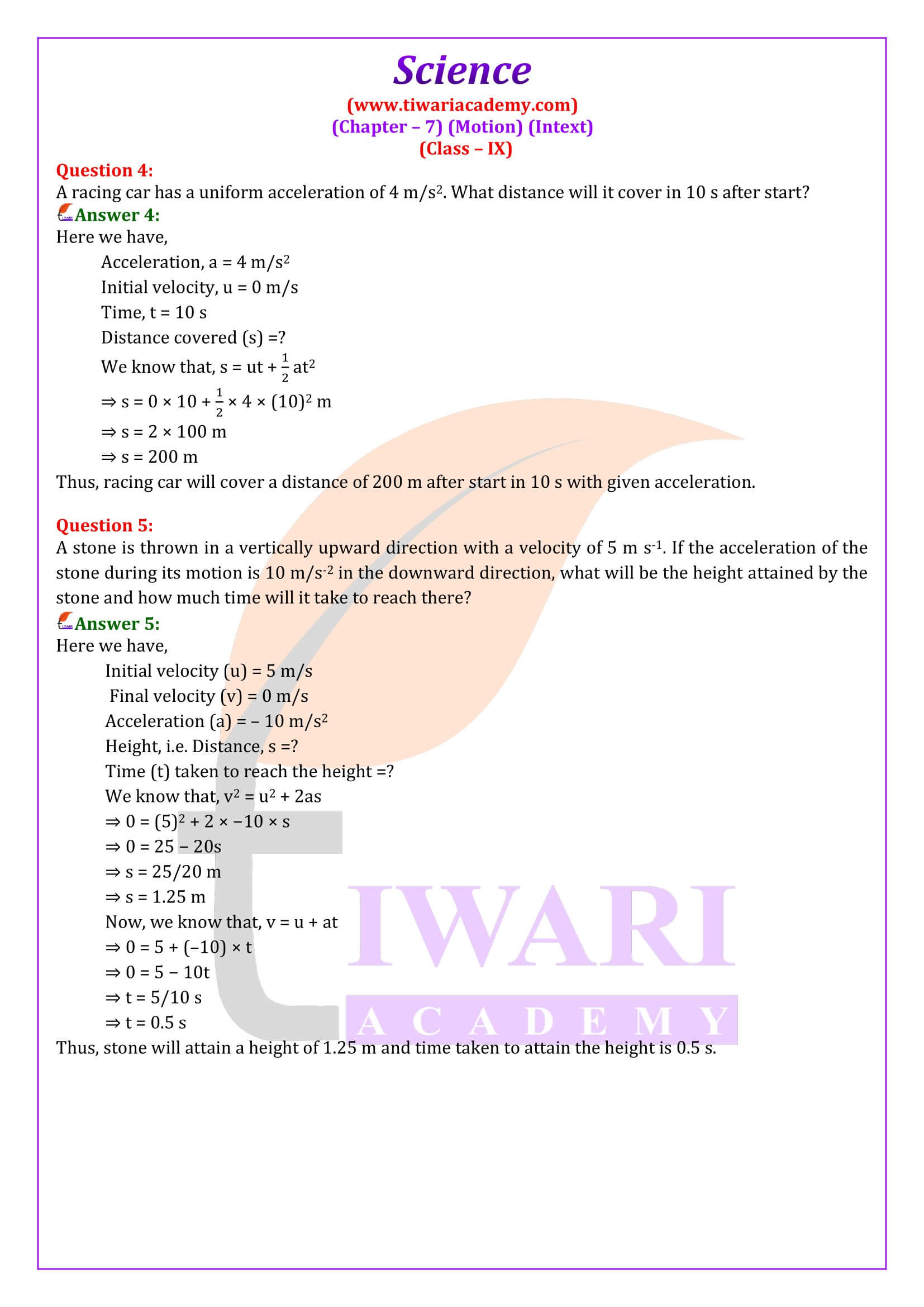NCERT Solutions for Class 9 Science Chapter 7 Motion in Hindi and English Medium for CBSE new session 2024-25. The solutions of class 9 science chapter 7 is modified according to rationalised NCERT books published for academic session 2024-25.
Class 9 Science Chapter 7 Question Answers
- Class 9 Science Chapter 7 Exercises
- Class 9 Science Chapter 7 Intext Questions
- Class 9 Science Chapter 7 Extra Questions
- Class 9 Science Chapter 7 Hindi Medium
- Class 9 Science Chapter 7 Notes in English
- Class 9 Science Chapter 7 Notes in Hindi
- Class 9 Science Chapter 7 NCERT Book
- Class 9 Science NCERT Solutions
- Class 9 all Subjects NCERT Solutions
NCERT Solutions for Class 9 Science Chapter 7
Class IX Science chapter 7 answers of all pages like Intext Questions on Page 100, Page 102, Page 103, Page 107, Page 109 and Exercises in English Medium free to download . These Solutions are useful for Uttar Pradesh High School Students also. So, download UP Board Solutions for 9 Science chapter 7 here in Hindi Medium. The videos related to each chapters are also available to free download. Hindi Medium version of 9th Science chapter 7 Page 110 ke Uttar, Page 112 ke Uttar, Page 114 ke Uttar, Page 118 ke Uttar, Page 121 ke Uttar and Abhyaas Ke Uttar are given to study online or download in PDF format. NCERT Solutions for Class 9 all Subjects based on Latest CBSE Syllabus are available to free download. Download Class 9 offline Apps from Play Store for offline use.
| Class: 9 | Science |
| Chapter 7: | Motion |
| Content: | Intext and Exercise Solutions |
| Content Type: | Text and Videos Format |
| Session: | 2024-25 |
| Medium: | Hindi and English Medium |
9th Science Chapter 7 Answers in English & Hindi Medium
CBSE NCERT Solutions for Class 9 Science Chapter 7 Motion all Intext Questions with exercises questions answers free to download or use online. All the solutions are in updated form for current academic session. Download Class 9 Science App in Hindi and English Medium for offline use.
Extra Questions on 9th Science Chapter 7
Define speed and velocity. What are their SI units?
Speed: Speed of a body is defined as the distance travelled by the body in unit time.
Velocity: Velocity of a body is the distance travelled by the body in unit time in a given direction.
The SI unit is meter/second.
Usha swims in 90 m long pool. She covers 180 m in one minute by swimming from one end to the other and back along the same straight path. Find the average speed and average velocity of usha.
3 m/s ; zero
Ahmed is moving in his car with a velocity of 45 km/h. How much distance will he cover (a) in one minute and (b) in one second?
(a) 750 m ;
(b) 12.5 m.
A train starting from rest attains a velocity of 72 km h^-1 in 5 minutes. Assuming that the acceleration is uniform, find (i) the acceleration and (ii) the distance travelled by the train for attaining this velocity.
(i) 1/15 m/s² ;
(ii) 3 km
A body starts to slide over a horizontal surface with an initial velocity of 0.5 m/s. Due to friction, its velocity decreases at the rate of 0.05 m/s². How much time will it takes for the body to stop?
10 seconds
What type of motion of tips of second’s hand of a watch? Is it uniform or accelerated?
The motion of the tip of second’s hand of a watch is not a uniform motion. It is accelerated motion due to change in the direction of motion.
What is the nature of the distance-time graph for uniform and non-uniform motion of an object?
When the motion is uniform, the distance-time graph is a straight line with some slope.
When the motion is non-uniform, the distance time graph is not a straight line. It can be any curve.
What is locomotion?
Locomotion is the ability of an animal to move its whole body from place to place without any external forces.
Questions for Practice on 9th Science Chapter 7
Important Questions on 9th Science Chapter 7
An athlete completes one round of circular track of diameter 200 m in 40 sec. What will be the distance covered and the displacement at the end of 2 minutes 20 sec?
Time taken = 2 min 20 sec = 140 sec. Radius, r = 100 m. In 40 sec the athlete complete one round. So, in 140 sec the athlete will complete = 140 ÷ 40 = 3.5 round. ⇒ Distance covered in 140 sec = 2πr × 3.5 = 2 × 22/7 × 100 × 3.5 = 2200 m. At the end of his motion, the athlete will be in the diametrically opposite position. ⇒ Displacement = diameter = 200 m.
When will you say a body is in (i) uniform acceleration? (ii) non-uniform acceleration?
(i) A body is said in uniform acceleration when its motion is along a straight line and its velocity changes by equal magnitude in equal interval of time.
(ii) A body is said in non-uniform acceleration when its motion is along a straight line and its velocity changes by unequal magnitude in equal interval of time.
Question 1:
A train travels 100 m long moving on a straight level track passes a pole in 5 s. Find (a) the speed of the train (b) the time it will take to cross a bridge 500m long.
Answer 1:
(a) 20 m/s
(b) 30 s
Question 2:
A car accelerates uniformly from 18 km/h to 36 km h/ in 5 second. Calculate (i) the acceleration and (ii) the distance covered by the car in that time.
Answer 2:
1 m/s² ; 37∙5 m
